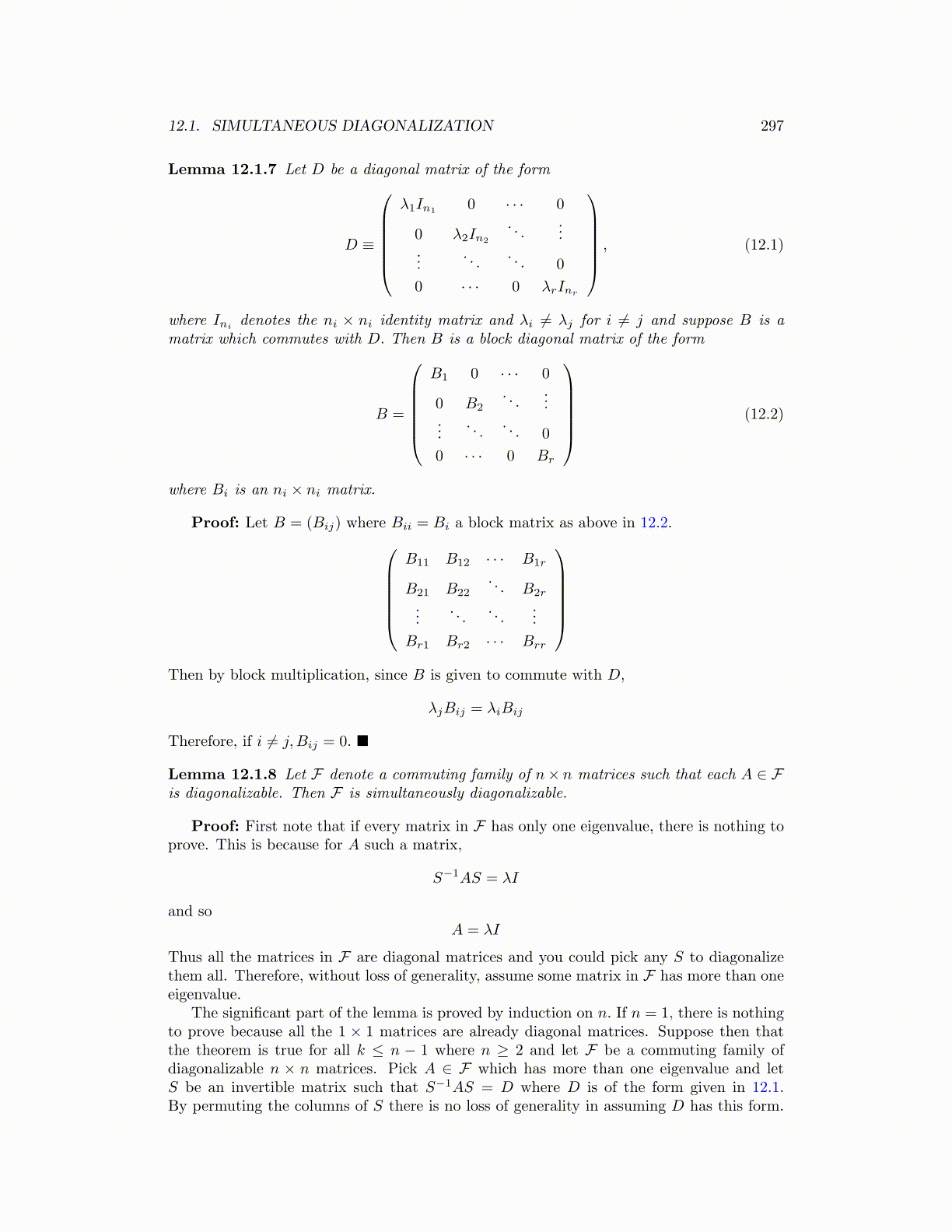
12.1. SIMULTANEOUS DIAGONALIZATION 297
Lemma 12.1.7 Let D be a diagonal matrix of the form
D ≡
λ1In1
0 · · · 0
0 λ2In2
. . ....
.... . .
. . . 0
0 · · · 0 λrInr
, (12.1)
where Ini denotes the ni × ni identity matrix and λi ̸= λj for i ̸= j and suppose B is amatrix which commutes with D. Then B is a block diagonal matrix of the form
B =
B1 0 · · · 0
0 B2. . .
......
. . .. . . 0
0 · · · 0 Br
(12.2)
where Bi is an ni × ni matrix.
Proof: Let B = (Bij) where Bii = Bi a block matrix as above in 12.2.B11 B12 · · · B1r
B21 B22. . . B2r
.... . .
. . ....
Br1 Br2 · · · Brr
Then by block multiplication, since B is given to commute with D,
λjBij = λiBij
Therefore, if i ̸= j, Bij = 0. ■
Lemma 12.1.8 Let F denote a commuting family of n× n matrices such that each A ∈ Fis diagonalizable. Then F is simultaneously diagonalizable.
Proof: First note that if every matrix in F has only one eigenvalue, there is nothing toprove. This is because for A such a matrix,
S−1AS = λI
and soA = λI
Thus all the matrices in F are diagonal matrices and you could pick any S to diagonalizethem all. Therefore, without loss of generality, assume some matrix in F has more than oneeigenvalue.
The significant part of the lemma is proved by induction on n. If n = 1, there is nothingto prove because all the 1 × 1 matrices are already diagonal matrices. Suppose then thatthe theorem is true for all k ≤ n − 1 where n ≥ 2 and let F be a commuting family ofdiagonalizable n × n matrices. Pick A ∈ F which has more than one eigenvalue and letS be an invertible matrix such that S−1AS = D where D is of the form given in 12.1.By permuting the columns of S there is no loss of generality in assuming D has this form.